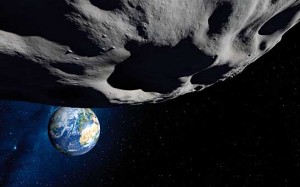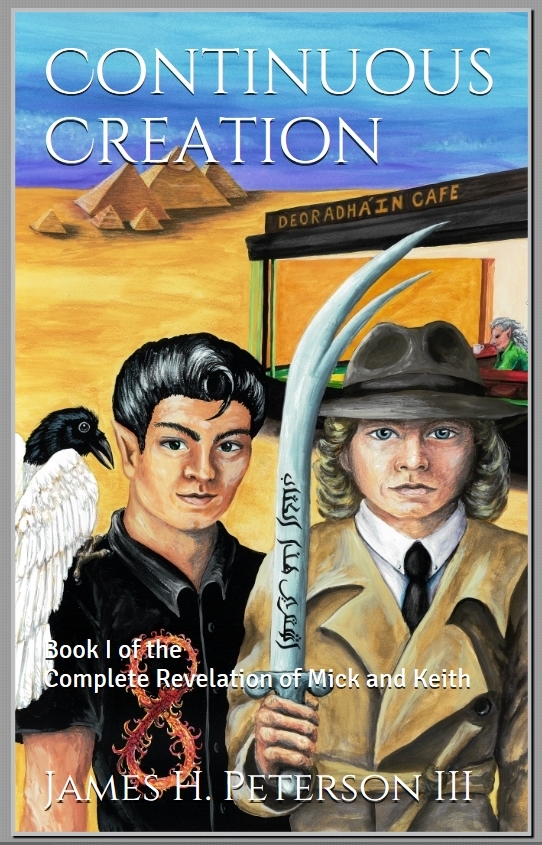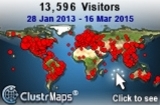iAfrica.com reports that an “…asteroid [Asteroid 1998 QE2] nearly three kilometres wide is set to pass by Earth on Friday with no risk of impact.” This of course begs the question, ‘Just how bloody close is close anyway?’ Well, according to the same article, the answer is a “…distance of 5.8 million kilometres, or about 15 times the distance between Earth and the moon.” That might be plenty of room for astronomy, but personally, I like billions or trillions of miles. I also have to wonder just what environmental affects something like this being so close to Terra‘s gravitational field? Who knows? I sure as Hell don’t. But make sure to watch the three videos at the end of this post.
According to the LATimes.com and Google.com (please comment if there is a better answer), the closet asteroid to Terra pass is Asteroid 1998 QE2:
It’s 1.7 miles long. Its surface is covered in a sooty black substance similar to the gunk at the bottom of a barbecue. If it impacted Earth it would probably result in global extinction…
Asteroid 1998 QE2 will make its closest pass to Earth on May 31 at 1:59 p.m. PDT…
At its closest approach the asteroid will still be 3.6 million miles from our planet (about 15 times the distance between the Earth and the moon), but it will be close enough for these powerful radar antennas to see features as small as 12 feet across.
My favourite line is “If it impacted Earth it would probably result in global extinction.” HA! Take that CormacMcCarthy– nobody lives to walk on “The Road.” All dead, la-de-da-de-everybody.
The BBC sums it up very well in two related peices:
Catastrophic methane release has been suggested as a possible cause of mass extinction. Methane clathrate is an ice-like substance formed from water and methane in the sea bed, arctic lakes and permafrost. It forms where the temperature is at freezing or a little above and where the pressure of overlying water and sediment creates the right conditions. A temperature rise causes the methane in the clathrate to be released as gas. Global warming results and causes further clathrate heating and methane release. The resultant soaring temperature causes such stress to plant and animal life that mass extinction follows.
And the even more encouraging scenario of Impact events:
Impact events, proposed as causes of mass extinction, are when the planet is struck by a comet or meteor large enough to create a huge shockwave felt around the globe. Widespread dust and debris rain down, disrupting the climate and causing extinction on a global, rather than local, scale. The demise of the dinosaurs at the end of the Cretaceous has been linked to an impact that left a crater in the seabed off the Yucatan peninsula of Mexico. Impacts have also been blamed for other mass extinctions, but the timing and links between cause and effect for these is still debated by scientists.
This, as I’ve mentioned before, is why apocalyptic and post-apocalyptic fiction generally stop short of using an actual extinction event in their background story. You know, it’s that pesky word “science” in “science fiction” that gets in the way. This is why stories like Stephen King‘s “The Stand” works so well, and “The Road” doesn’t. Kill most of humanity, okay, fine either way. But you have to leave most of the setting, the environment, the physical world intact enough to have a story that makes sence. For my money, Frederik Pohl‘s “Fermi and Frost” is the only accurate story about how some humans might, for a short time, live through global cloud cover.
According to the Wiki PLOT SPOILER – PLOT SPOILER – PLOT SPOILER – the “Fermi and Frost” plot Summary is:
The story opens with an astronomer who is at an airport when a nuclear war begins. Recognized by a fan, he is offered a seat on a plane escaping to Iceland. Though Reykjavík is destroyed by a thermonuclear warhead, the rest of the island is unharmed. The survivors take advantage of Iceland’s geology and experience with cold weather to prepare for the nuclear winter that follows. Interwoven into the story is speculation about the Fermi paradox and the perspective on the possibility of alien life given the prospects of nuclear war.
(See, I did finally get around to that Fermi paradox post. Yeah, okay, no I haven’t. Still, it’s something.)
Me, I’m aiming for creating “Post Rapture” fiction, in which humanity, as such, doesn’t actually appear at all.
“Asteroid 1998 QE2 with Moon? or UFO NASA Radar Images Shows”
https://www.youtube.com/watch?v=Keoj-82-HJQ
“Asteroid To Swing By Earth Is ‘9 Cruise-Ships Big’ | Orbit Animation”
“Asteroid Near Earth; on 31st May 2013, Asteroid 1998 QE2”
https://www.youtube.com/watch?v=AX8iRHFG6Fc














